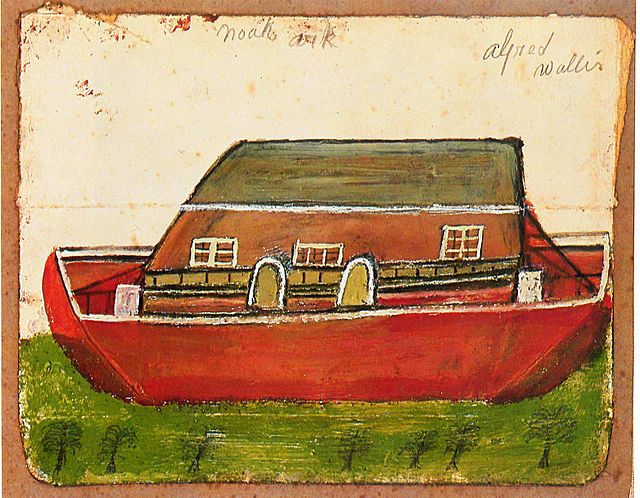Naïve art is usually defined as visual art that is created by a person who lacks the formal education and training that a professional artist undergoes. When this aesthetic is emulated by a trained artist, the result is sometimes called primitivism, pseudo-naïve art, or faux naïve art.
Henri Rousseau's The Repast of the Lion (circa 1907), is an example of naïve art.
Alfred Wallis, 1942, before Noah's Ark
In the arts of the Western World, Primitivism is a mode of aesthetic idealization that means to recreate the experience of the primitive time, place, and person, either by emulation or by re-creation. In Western philosophy, Primitivism proposes that the people of a primitive society possess a morality and an ethics that are superior to the urban value system of civilized people.
In a Tropical Forest Combat of a Tiger and a Buffalo (1908–1909), by Henri Rousseau
The stylistic influences of the African mask of the Fang people are noticeable in the painting Les Demoiselles d'Avignon (1907), by Pablo Picasso.
Spirit of the Dead Watching (1892), by Paul Gauguin
In the painting Les Demoiselles d'Avignon (1907) the two figures at the right indicate the stylistic origin of Pablo Picasso's African period






